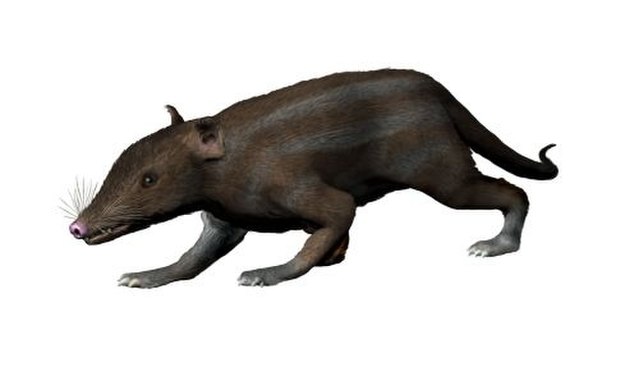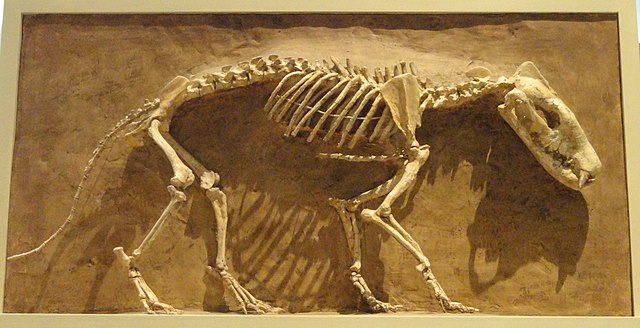Elephant shrews, also called jumping shrews or sengis, are small insectivorous mammals native to Africa, belonging to the family Macroscelididae, in the order Macroscelidea. Their traditional common English name "elephant shrew" comes from a perceived resemblance between their long noses and the trunk of an elephant, and their superficial similarity with shrews in the order Eulipotyphla. However, phylogenetic analysis has revealed that elephant shrews are not properly classified with true shrews, but are in fact more closely related to elephants than to shrews. In 1997, the biologist Jonathan Kingdon proposed that they instead be called "sengis", a term derived from the Bantu languages of Africa, and in 1998, they were classified into the new clade Afrotheria.
Image: Rhynchocyon petersi from side
Image: Elephant shrew range
Image: Elephant shrew range genus
R. petersi skeleton, Museum of Osteology
A mammal is a vertebrate animal of the class Mammalia. Mammals are characterized by the presence of milk-producing mammary glands for feeding their young, a neocortex region of the brain, fur or hair, and three middle ear bones. These characteristics distinguish them from reptiles and birds, from which their ancestors diverged in the Carboniferous Period over 300 million years ago. Around 6,400 extant species of mammals have been described and divided into 29 orders.
Restoration of Juramaia sinensis, the oldest-known Eutherian (160 mya)
Fossil of Thrinaxodon at the National Museum of Natural History
Hyaenodon horridus, a North American species of hypercarnivore within the now-extinct order Hyaenodonta, at the Royal Ontario Museum. The genus Hyaenodon was amongst the most successful mammals of the late Eocene-early Miocene epochs spanning for most of the Paleogene and some of the Neogene periods, undergoing many endemic radiations in North America, Europe, and Asia.
Sexual dimorphism in aurochs, the extinct wild ancestor of cattle








